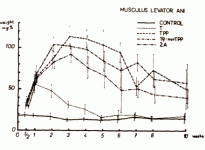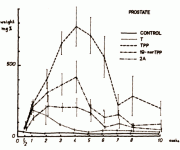Inteli Health
Medical content reviewed by the faculty of the Harvard Medical School.
Resistance Exercise
Resistance exercise — also called strength training — increases muscle strength and mass, bone strength and your body's metabolism. It can also help you maintain or lose weight and improve your body image and self-esteem.
Adequate muscle strength is what enables you to do such daily activities as climbing stairs, getting in and out of bed and carrying the groceries into the house. Resistance training increases muscle strength by putting more than the usual amount of strain on a muscle. This increased load stimulates the growth of small proteins inside each muscle cell that play a central role in the ability of the muscle to generate force.
Methods for resistance training include free weights, weight machines and calisthenics. When using free weights, dumbbells and bars stacked with weight plates, you are responsible for both lifting the weight and determining and controlling your body position through the range of motion. If you use weight machines, the machines allow you to lift plates, but the machine dictates the movement that you perform. Calisthenics, such as chin-ups, push-ups and sit-ups, use your own body weight as the resistance force. A newer form of resistance training called resistance tubing involves the use of an elastic band that provides resistance to the active muscles.
Opinions differ as to what is the best type of resistance training program.
In general, the best way to build strength is to lift weight in three sets of eight to 12 repetitions. Lifting a lighter weight for more repetitions will build endurance and tone.
A resistance workout usually involves a number of different exercises (often on weight machines that are designed for this purpose) that focus on different muscle groups. Normally the exerciser does one to three sets of each exercise (a set can be anywhere from eight to 15 repetitions and takes about one minute to complete). A typical session lasts about 30 minutes.
If you do two or three resistance workouts per week, you may notice an increase in the strength and size of the exercised muscles. These increases come from the enhancement of various chemical processes in the muscle cells. The greatest improvement will come in the first several months of regular training.
Regular weight training exercises can boost your cardiovascular health by improving your levels of high-density lipoprotein, or HDL (good cholesterol). Resistance training can also have a beneficial effect on your body composition. Because muscles burn more calories than fat, a greater muscle mass will increase your metabolic rate, burn more calories and reduce fat tissue.
Resistance training stresses bones as well as muscles and helps increase bone mineral content and prevent osteoporosis. Most important for older people, resistance exercise is the best way to combat the gradual loss of muscle mass that occurs as we age (beginning at age 35 or so). Studies have found that men and women in their 70s and 80s can dramatically improve their strength, mobility and agility with just 10 weeks of strength training. Many doctors now routinely prescribe two or three sessions of resistance exercise per week for their elderly patients.
Researchers have developed some evidence that indicates resistance training may be better than aerobic exercise alone for improving self-esteem and body image. One explanation for this improvement may be that the feedback from weight training is immediate. You can easily detect progress in muscle growth and improved muscle tone.













